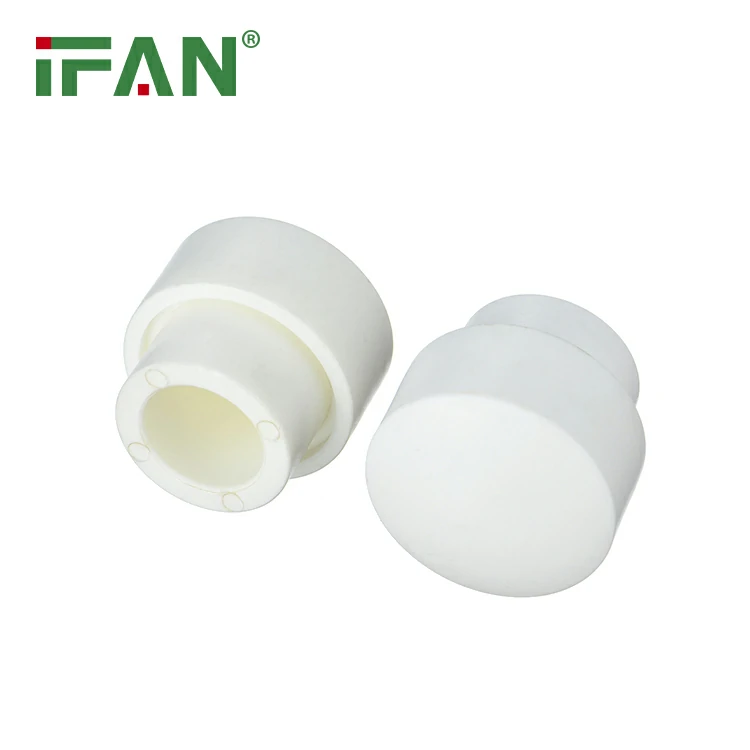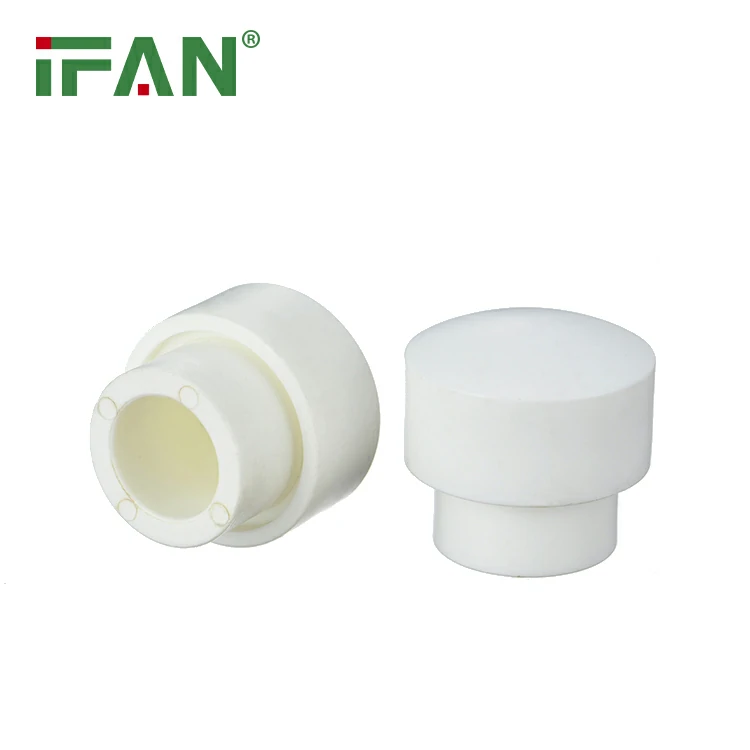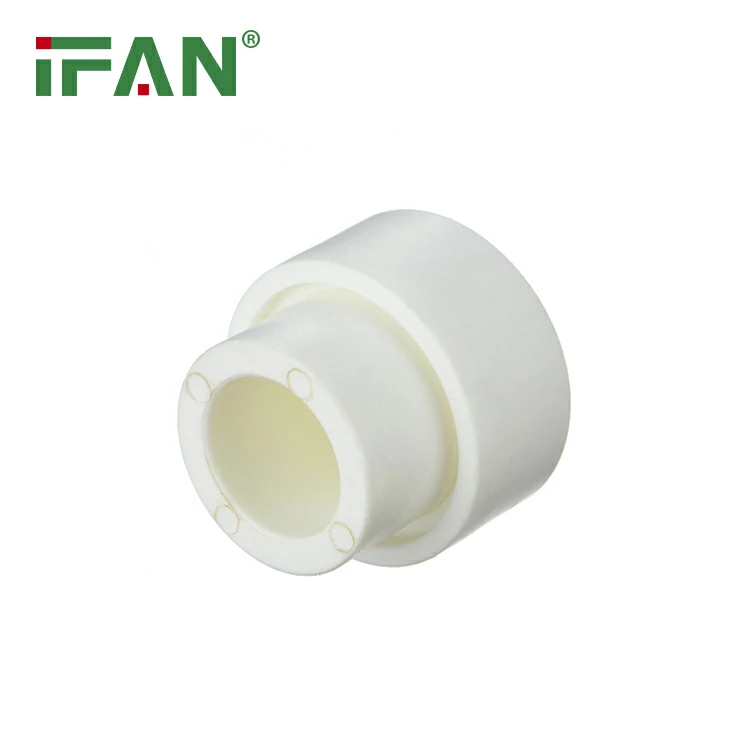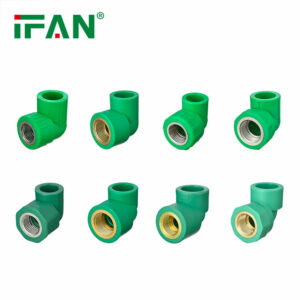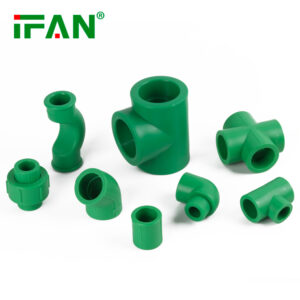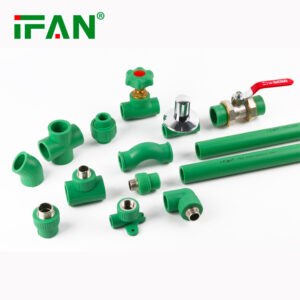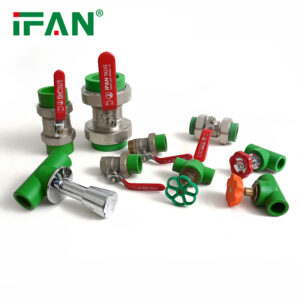Description
IFAN factory 30+ years manufacture experience support color /size customization support free sample.Welcome to consult for catalog and free samples.This is our Facebook Website:www.facebook.com,Click to watch IFAN’s product video.Compared with Tomex products, our IFAN products from quality to price are your best choice, welcome to buy!
In recent years, there has been a growing awareness about environmental sustainability, and this shift has impacted all sectors, including plumbing. Traditional plumbing materials, like metal and PVC pipes, have often been scrutinized for their environmental impact. However, PPR fittings (Polypropylene Random Copolymer) have emerged as an eco-friendly alternative. If you’re considering plumbing materials for your next project, understanding the environmental benefits of PPR fittings can help you make a more sustainable choice. In this article, we will explore the key reasons why PPR fittings are considered an environmentally friendly option for plumbing systems.
1. Durability and Longevity
One of the primary reasons PPR fittings are considered environmentally beneficial is their durability. PPR pipes and fittings are resistant to corrosion, rust, and scale buildup, which are common issues with metal pipes. Unlike metal or PVC pipes, PPR fittings do not degrade over time, meaning they require fewer replacements throughout their lifespan. As a result, fewer resources are consumed in the long run, reducing the environmental impact associated with frequent pipe replacements and maintenance.
Because PPR fittings are designed to last for several decades, the overall environmental footprint of plumbing systems using PPR is significantly reduced. This longevity translates into a reduction in the need for new raw materials and manufacturing processes, which can be resource-intensive.
2. Recyclability of PPR Fittings
Another notable environmental benefit of PPR fittings is their recyclability. Polypropylene, the material used in PPR fittings, is a fully recyclable plastic. When a PPR fitting reaches the end of its useful life, it can be recycled to create new products, reducing the need for virgin materials. This recycling process helps minimize waste and supports the circular economy by keeping valuable materials in use rather than in landfills.
Unlike PVC pipes, which are difficult to recycle due to the presence of harmful additives and chemicals, PPR fittings can be processed and reused more easily. This ability to recycle PPR fittings reduces their overall environmental impact and makes them a more sustainable choice compared to other plumbing materials.
3. Energy Efficiency During Production
The production of PPR fittings requires less energy compared to other materials like metal or PVC. The manufacturing process for PPR fittings is simpler, and the raw materials are readily available. Because PPR fittings are produced using less energy, the carbon footprint associated with their manufacturing is lower than that of other plumbing materials. This energy efficiency during production contributes to a more sustainable and environmentally friendly plumbing solution.
Moreover, the manufacturing of PPR fittings doesn’t release harmful toxins or pollutants into the environment, which is a common issue with some other plastic materials. This clean production process helps minimize air and water pollution, further boosting the eco-friendly appeal of PPR fittings.
4. Water Conservation
Water conservation is one of the most pressing issues in many parts of the world. Plumbing systems play a crucial role in managing water use, and choosing the right materials can significantly impact water efficiency. PPR fittings are designed to provide secure, leak-free connections, reducing the risk of water wastage caused by leaks. Additionally, the smooth inner surface of PPR pipes prevents scale buildup, which can obstruct water flow over time.
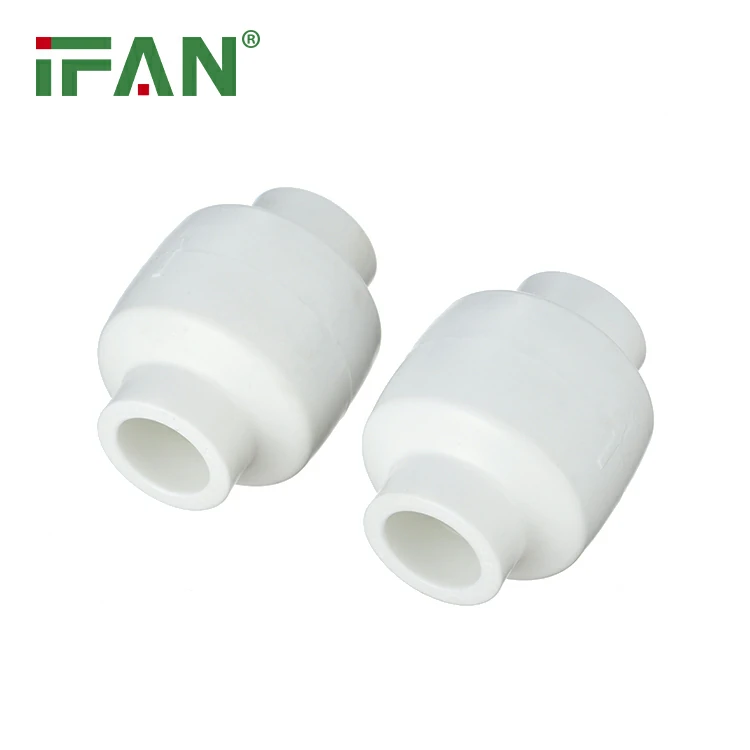
By maintaining optimal water flow and minimizing leaks, PPR fittings contribute to water conservation efforts. This is particularly important in areas with water scarcity, where every drop of water counts. A plumbing system using PPR fittings is more efficient and ensures that water is used effectively without unnecessary wastage.
5. Non-Toxic and Safe for Drinking Water
Unlike some other plumbing materials that leach harmful chemicals into the water supply, PPR fittings are safe for potable water use. They do not release any toxins or harmful substances into the water, making them an ideal choice for drinking water systems. PPR fittings are free from heavy metals like lead and cadmium, which can be present in some metals, and they don’t contain any harmful additives, unlike PVC pipes.
By choosing PPR fittings, you ensure that your plumbing system does not contribute to water contamination. This non-toxic quality makes PPR fittings a safer and more environmentally friendly option for plumbing projects, particularly when it comes to drinking water.
6. Lower Carbon Footprint
The use of PPR fittings helps lower the overall carbon footprint of plumbing projects. The combination of energy-efficient production, long-lasting durability, recyclability, and water-saving benefits contributes to a reduction in greenhouse gas emissions. By opting for PPR fittings instead of more energy-intensive or wasteful alternatives, you are making a choice that benefits both the environment and your budget in the long term.
Conclusion
Incorporating PPR fittings into your plumbing projects offers significant environmental benefits. From their durability and recyclability to their energy-efficient production process, PPR fittings contribute to a more sustainable and eco-friendly plumbing system. Additionally, their ability to reduce water waste and provide a non-toxic solution for drinking water makes them a smart choice for environmentally conscious homeowners and businesses alike.
By choosing PPR fittings, you can reduce your environmental impact, save money over time, and help promote a more sustainable future. As the world continues to prioritize sustainability, materials like PPR fittings will play an essential role in building a greener, cleaner planet.
FAQs
1. What are PPR fittings made of?
PPR fittings are made of polypropylene random copolymer (PPR), a type of plastic known for its durability, resistance to corrosion, and high recyclability.
2. How long do PPR fittings last?
PPR fittings are designed to last for several decades, with a lifespan of up to 50 years or more, making them a long-lasting plumbing solution.
3. Can PPR fittings be recycled?
Yes, PPR fittings are fully recyclable, which helps reduce waste and supports the circular economy by reusing the material in new products.
4. Are PPR fittings safe for drinking water?
Yes, PPR fittings are non-toxic and do not leach harmful chemicals into the water, making them safe for potable water systems.
5. How do PPR fittings help with water conservation?
PPR fittings provide leak-free connections and maintain smooth water flow, which helps reduce water wastage and supports water conservation efforts.
Related products
-
PPR Fittings
Versatile Brass Fittings for All Your Plumbing Needs
-
PPR Fittings
PPR Material Pipe Fittings


